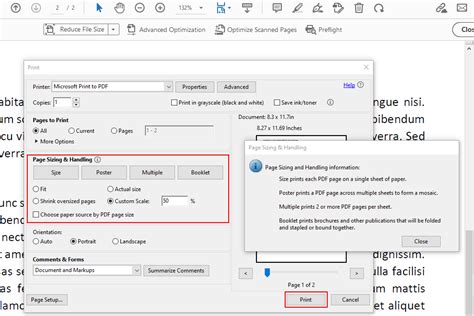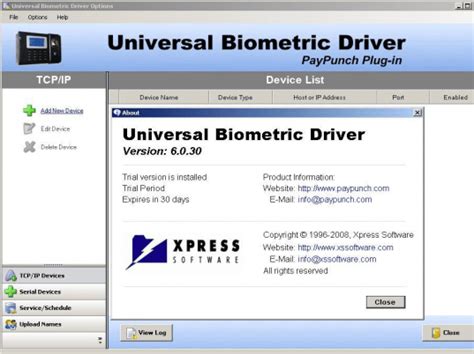Fortigate vpn client
Author: e | 2025-04-23

FortiGate as SSL VPN Client. The FortiGate can be configured as an SSL VPN client, using an SSL-VPN Tunnel interface type. When an SSL VPN client connection is

FortiGate as SSL VPN Client
Packets with destinations on the 192.168.10.0 network through the VPN, encrypted and encapsulated. Similarly, the Site B FortiGate unit is configured to send packets with destinations on the 10.10.1.0 network through the VPN tunnel to the Site A VPN gateway.In the site-to-site, or gateway-to-gateway VPN shown below, the FortiGate units have static (fixed) IP addresses and either unit can initiate communication.You can also create a VPN tunnel between an individual PC running FortiClient and a FortiGate unit, as shown below. This is commonly referred to as Client-to-Gateway IPsec VPN.VPN tunnel between a FortiClient PC and a FortiGate unitOn the PC, the FortiClient application acts as the local VPN gateway. Packets destined for the office network are encrypted, encapsulated into IPsec packets, and sent through the VPN tunnel to the FortiGate unit. Packets for other destinations are routed to the Internet as usual. IPsec packets arriving through the tunnel are decrypted to recover the original IP packets.Clients, servers, and peersA FortiGate unit in a VPN can have one of the following roles:Server — responds to a request to establish a VPN tunnel.Client — contacts a remote VPN gateway and requests a VPN tunnel.Peer — brings up a VPN tunnel or responds to a request to do so.The site-to-site VPN shown above is a peer-to-peer relationship. Either FortiGate unit VPN gateway can establish the tunnel and initiate communications. The FortiClient-to-FortiGate VPN shown below is a client-server relationship. The FortiGate unit establishes a tunnel when the FortiClient PC requests one.A FortiGate unit cannot. FortiGate as SSL VPN Client. The FortiGate can be configured as an SSL VPN client, using an SSL-VPN Tunnel interface type. When an SSL VPN client connection is FortiGate as SSL VPN Client. The FortiGate can be configured as an SSL VPN client, using an SSL-VPN Tunnel interface type. When an SSL VPN client connection is established, the client FortiGate as SSL VPN Client. The FortiGate can be configured as an SSL VPN client, using an SSL-VPN Tunnel interface type. When an SSL VPN client connection is established, the client FortiGate as SSL VPN Client. The FortiGate can be configured as an SSL VPN client, using an SSL-VPN Tunnel interface type. When an SSL VPN client connection is established, the client SSL VPN Choosing a mode of operation and applying the proper levels of security depends on your specific environment and requirements. In tunnel mode, the SSL VPN client encrypts all traffic from the remote client computer and sends it to the FortiGate through an SSL VPN tunnel over the HTTPS link between the user and the FortiGate. It supports a wide range of applications, and provides a transparent user experience when properly configured. FortiClient might enable a DTLS tunnel that allows the SSL VPN to encrypt traffic using TLS, and uses UDP as the transport layer instead of TCP. This avoids retransmission issues that can occur with TCP-inTCP that result in lower throughput. For information on troubleshooting slow SSL VPN throughput, see Troubleshooting common issues in the FortiOS Administration Guide. Web mode provides clientless network access using a web browser with built-in SSL encryption. It is easier to set up than tunnel mode and does not require that an application be installed on the endpoint, but it has limited application support and requires more resources on the FortiGate. For more information, see SSL VPN best practices in the FortiOS Administration Guide. Starting in 7.6.0, FortiGate models with 2GB of memory no longer support SSL VPN. Fortinet Inc. recommends to use IPsec VPN or other non-VPN secure remote access solutions such as ZTNA and FortiSASE. See SSL VPN to IPsec VPN migration and Non-VPN remote access for more details.Comments
Packets with destinations on the 192.168.10.0 network through the VPN, encrypted and encapsulated. Similarly, the Site B FortiGate unit is configured to send packets with destinations on the 10.10.1.0 network through the VPN tunnel to the Site A VPN gateway.In the site-to-site, or gateway-to-gateway VPN shown below, the FortiGate units have static (fixed) IP addresses and either unit can initiate communication.You can also create a VPN tunnel between an individual PC running FortiClient and a FortiGate unit, as shown below. This is commonly referred to as Client-to-Gateway IPsec VPN.VPN tunnel between a FortiClient PC and a FortiGate unitOn the PC, the FortiClient application acts as the local VPN gateway. Packets destined for the office network are encrypted, encapsulated into IPsec packets, and sent through the VPN tunnel to the FortiGate unit. Packets for other destinations are routed to the Internet as usual. IPsec packets arriving through the tunnel are decrypted to recover the original IP packets.Clients, servers, and peersA FortiGate unit in a VPN can have one of the following roles:Server — responds to a request to establish a VPN tunnel.Client — contacts a remote VPN gateway and requests a VPN tunnel.Peer — brings up a VPN tunnel or responds to a request to do so.The site-to-site VPN shown above is a peer-to-peer relationship. Either FortiGate unit VPN gateway can establish the tunnel and initiate communications. The FortiClient-to-FortiGate VPN shown below is a client-server relationship. The FortiGate unit establishes a tunnel when the FortiClient PC requests one.A FortiGate unit cannot
2025-04-08SSL VPN Choosing a mode of operation and applying the proper levels of security depends on your specific environment and requirements. In tunnel mode, the SSL VPN client encrypts all traffic from the remote client computer and sends it to the FortiGate through an SSL VPN tunnel over the HTTPS link between the user and the FortiGate. It supports a wide range of applications, and provides a transparent user experience when properly configured. FortiClient might enable a DTLS tunnel that allows the SSL VPN to encrypt traffic using TLS, and uses UDP as the transport layer instead of TCP. This avoids retransmission issues that can occur with TCP-inTCP that result in lower throughput. For information on troubleshooting slow SSL VPN throughput, see Troubleshooting common issues in the FortiOS Administration Guide. Web mode provides clientless network access using a web browser with built-in SSL encryption. It is easier to set up than tunnel mode and does not require that an application be installed on the endpoint, but it has limited application support and requires more resources on the FortiGate. For more information, see SSL VPN best practices in the FortiOS Administration Guide. Starting in 7.6.0, FortiGate models with 2GB of memory no longer support SSL VPN. Fortinet Inc. recommends to use IPsec VPN or other non-VPN secure remote access solutions such as ZTNA and FortiSASE. See SSL VPN to IPsec VPN migration and Non-VPN remote access for more details.
2025-04-13Hello,we having trouble with throughput the SSL VPN on WindowsLatency from the client to the Fortigate is about 20ms and bandwidth in Fortigate site is 1Gbps and client site is 100MbbpsFirst, when connecting locally over the internal gigabit network (with near-zero latency), performance easily exceeds about 60Mbps for download on the client. I verified through trace routes, the route table, and Task Manager that tested traffic was indeed flowing through SSL VPN. This tells me that the underlying hardware is capable. However, when testing from off-site (at least 100Mbps and 20ms latency), the performance changes. From the client' s perspective, the download rate through SSL VPN is about 13Mbps and the upload is the problem in that it cannot exceed about 2-3Mbps.It seems that the increased latency is the contributing factor. Given that the SSL VPN uses TCP, my guess is that there' s an issue with TCP window scaling of the SSL VPN connection itself, especially when the client is sending data to the Fortigate.I tried disable all UTM, change IP on wan. wan has no errors, MTU 1500, speed 1GbitFD (fix).Important: If I configured IPsec VPN and test it, throughput from the corporate LAN to the client is over 80Mbps on both sides. And also traffic to the internet (through the Fortigate, no split-tunnel) reaches maximum client line (about 90Mbps).Has anyone else been able to achieve better performance on either Windows SSL VPN clients? Our clients need good throughput in both directions from corporate LAN and Internet-based sources where latency far from zero...My testing has included Windows 7 and Windows 10 Transfer tests included iperf (tcp and udp modes), SMB, FTP, Speedtest.net (and similar tools hosted by the ISP). Fortigate 100D running on v5.4.3,build1111 and FortiClient 5.4.2.0860config vpn ssl settingsset reqclientcert disableset sslv3 disableset tlsv1-0 disableset tlsv1-1 enableset tlsv1-2 enableunset banned-cipherset ssl-big-buffer disableset ssl-insert-empty-fragment enableset https-redirect disableset ssl-client-renegotiation disableset force-two-factor-auth disableset servercert "**********"set algorithm highset idle-timeout 0set auth-timeout 28800set tunnel-ip-pools "*********"set dns-suffix "*******.local"set dns-server1 172.22.91.100set dns-server2 172.22.91.101set wins-server1 172.22.91.100set wins-server2 172.22.91.101set ipv6-dns-server1 ::set ipv6-dns-server2 ::set ipv6-wins-server1 ::set ipv6-wins-server2 ::set route-source-interface disableset url-obscuration disableset http-compression disableset http-only-cookie enableset port
2025-04-10Be a VPN server if it has a dynamically-assigned IP address. VPN clients need to be configured with a static IP address for the server. A FortiGate unit acts as a server only when the remote VPN gateway has a dynamic IP address or is a client-only device or application, such as FortiClient.As a VPN server, a FortiGate unit can also offer automatic configuration for FortiClient PCs. The user needs to know only the IP address of the FortiGate VPN server and a valid user name/password. FortiClient downloads the VPN configuration settings from the FortiGate VPN server. For information about configuring a FortiGate unit as a VPN server, see the FortiClient Administration Guide.EncryptionEncryption mathematically transforms data to appear as meaningless random numbers. The original data is called plaintext and the encrypted data is called ciphertext. The opposite process, called decryption, performs the inverse operation to recover the original plaintext from the ciphertext.The process by which the plaintext is transformed to ciphertext and back again is called an algorithm. All algorithms use a small piece of information, a key, in the arithmetic process of converted plaintext to ciphertext, or vice-versa. IPsec uses symmetrical algorithms, in which the same key is used to both encrypt and decrypt the data. The security of an encryption algorithm is determined by the length of the key that it uses. FortiGate IPsec VPNs offer the following encryption algorithms, in descending order of security:AES–GCM Galois/Counter Mode (GCM), a block cipher mode of operation providing both confidentiality and
2025-04-09